Mediterranean cuisine is celebrated for its vibrant flavors and healthful benefits, influenced by the varied cultures and traditions bordering the Mediterranean Sea. While it encompasses a wide variety of dishes from different countries, the core dietary pattern emphasizes plant-based foods, healthy fats, and lean proteins. This cuisine is deeply rooted in history and tradition, offering more than just a culinary experience, but a journey into culturally rich and diverse dietary practices. Typically characterized by the use of olive oil, legumes, grains, fruits, and vegetables, Mediterranean cuisine also adapts to specific dietary needs, including gluten-free options that maintain the essence of the region’s flavors.
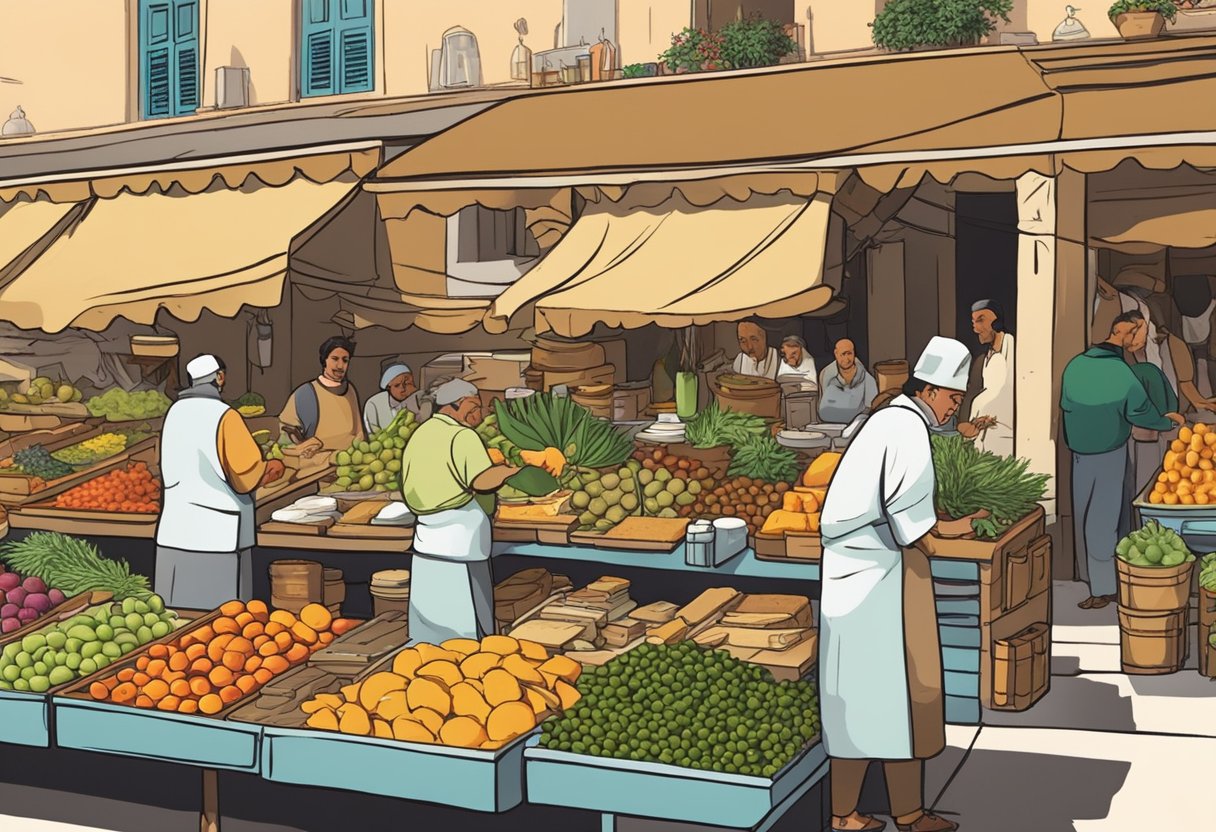
The regional variations in Mediterranean cooking are as diverse as the cultures themselves. From the spice-infused dishes of North Africa to the seafood-dominated menus of coastal Greece, each area brings its unique twist to the table. This diversity is also evident in signature dishes and key ingredients—like the use of tomatoes, eggplants, and a multitude of herbs—which differ from one locale to another. While the fundamental principles of the Mediterranean diet remain consistent, including the importance of communal eating and seasonal food, these regional nuances contribute to a rich tapestry of culinary experiences. Adapting such a varied cuisine to a gluten-free diet involves embracing naturally gluten-free staples, such as fresh produce and proteins, and replacing traditional grains with alternatives like quinoa and rice.
Key Takeaways
- Mediterranean cuisine balances health and flavor, emphasizing a plant-based dietary pattern with abundant gluten-free options.
- Cultural traditions and regional ingredients shape the distinct variations within Mediterranean cooking.
- The Mediterranean diet encourages communal meals and seasonal foods, adaptable to modern dietary requirements.
Table of Contents
Historical Context of Mediterranean Cuisine
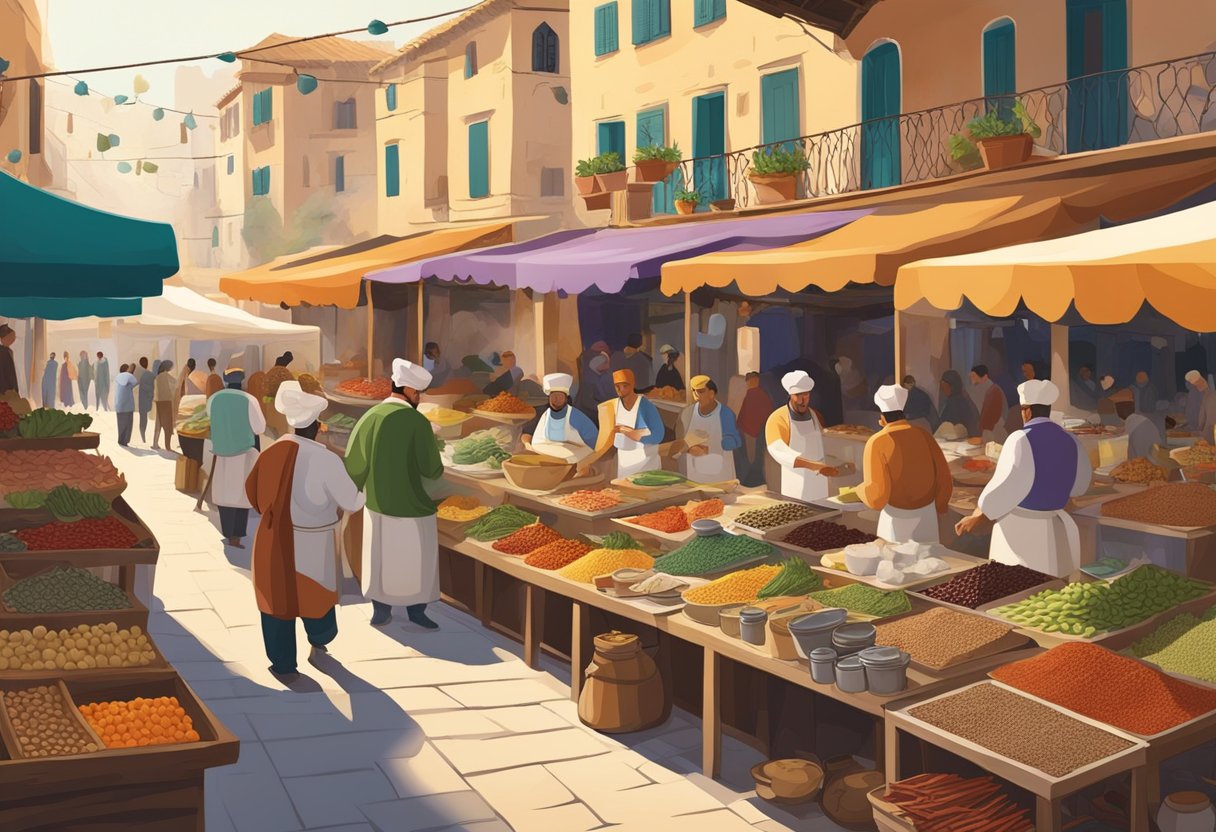
Mediterranean cuisine is deeply rooted in the region’s rich history and is shaped by a confluence of diverse cultures and ancient civilizations. This cuisine has evolved over millennia, characterized by the adaptation of foods to suit a gluten-free diet that naturally aligns with the produce of the Mediterranean basin.
Influences from Ancient Civilizations
The Mediterranean basin is often referred to as the cradle of Western civilization, and the dietary habits reflect this heritage. Ancient Egypt, for example, cultivated gluten-free grains like millet and corn, which are still prevalent in today’s diet. The Phoenicians introduced techniques of fermenting and baking, which later civilizations adapted to create gluten-free alternatives. In Ancient Greece, the emphasis on fresh produce, lean meats, and seafood provided a basis for the gluten-free dishes popular in Mediterranean cuisine.
Development of Culinary Traditions
As empires expanded, particularly the Roman Empire, they absorbed culinary practices from the regions they conquered, melding these influences into a distinct gastronomic tapestry. Amid this cultural exchange, a common thread persisted: the selection of naturally gluten-free ingredients such as olives, legumes, fruits, and an array of vegetables. The practice of oil-based cooking—notably with olive oil—also encapsulates the intersection of these culinary traditions, reinforcing a diet that skews gluten-free without the need for modern-day substitutes.
Defining the Mediterranean Diet
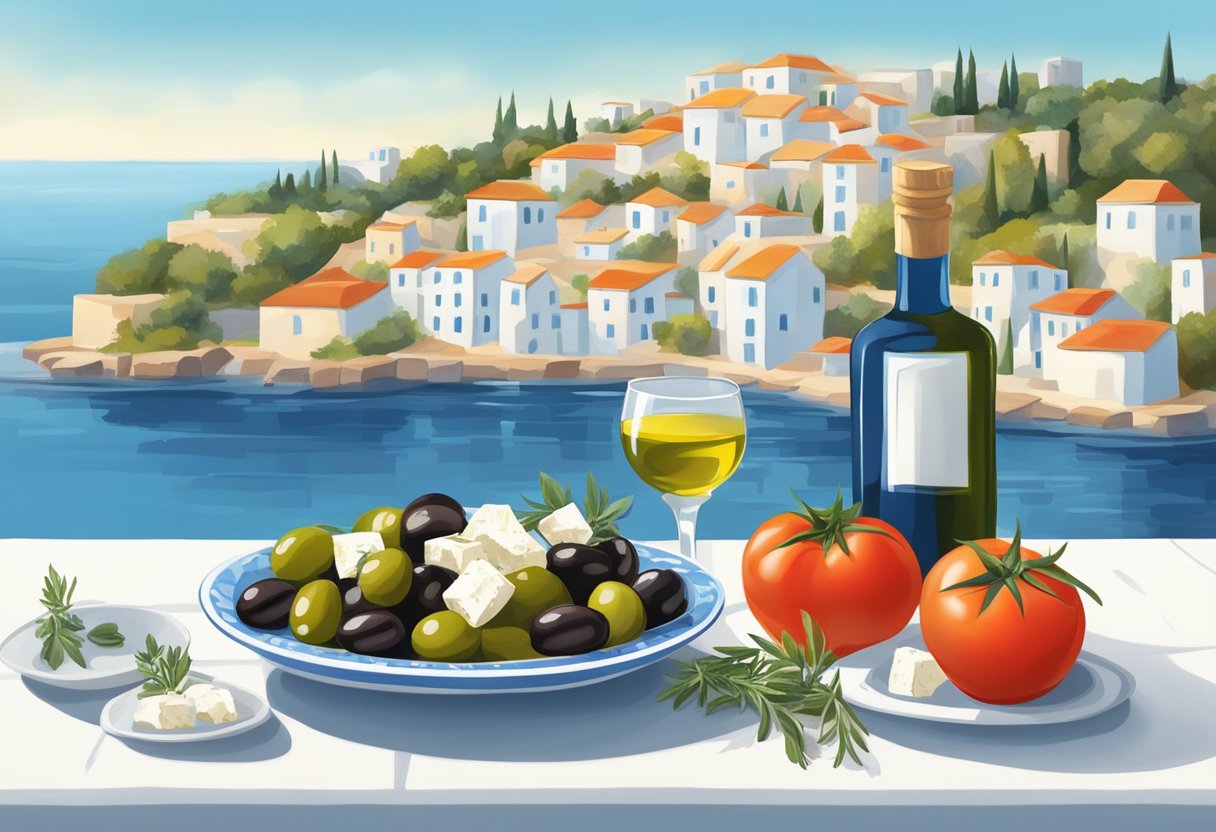
The Mediterranean Diet emphasizes a variety of nutrient-rich foods and possesses numerous health benefits tied to its core components.
Primary Components and Food Groups
The Mediterranean Diet is characterized by a high intake of vegetables, fruits, grains, and nuts. Central to this diet is the use of olive oil as the primary source of added fat. Gluten-free grains like quinoa, buckwheat, and brown rice are regularly consumed, catering to those who follow a gluten-free regimen. Seafood is preferred over red meat, eaten in moderation, while legumes serve as main sources of protein and fiber.
- Vegetables: A cornucopia of colors, from leafy greens to cruciferous varieties.
- Fruits: Enjoyed fresh or as part of a dessert, with a focus on seasonal availability.
- Gluten-Free Grains: Staples include quinoa, millet, and brown rice.
- Olive Oil: The central culinary oil, used for cooking and dressings.
- Seafood: Featured often, it offers omega-3 fatty acids.
- Nuts: Snacked on or used in dishes for texture and nutrients.
- Legumes: Includes beans, lentils, and chickpeas, key for fiber and protein.
Health Benefits and Research Findings
Research supports the health benefits of the Mediterranean Diet in reducing the risk of chronic diseases such as heart disease and cancer. Its wealth of nutrients—from antioxidants in fruits and vegetables to the healthy fats found in olive oil and seafood—contribute to this diet’s protective effects. Findings also point to the diet’s ability to improve longevity and brain health, positioning it as a sustainable eating pattern for those seeking a balanced and heart-healthy lifestyle.
Regional Variations in Mediterranean Cooking

Mediterranean cuisine showcases a tapestry of flavors influenced by various cultures and regions. Each area lends its unique ingredients and techniques to the collective culinary identity.
Northern Africa’s Distinct Flavors
North Africa, including Morocco, is recognized for its vibrant spices and gluten-free staples like couscous made from corn rather than the traditional wheat. Moroccan cuisine features a plethora of spices like cumin, coriander, and saffron which are used to create richly flavored dishes such as tagines and harira.
Southern European Influences on Cuisine
Countries such as Italy, France, and Spain contribute to the Mediterranean palette with their focus on fresh produce and gluten-free options. Italy offers a variety of gluten-free pasta alternatives, often made from rice or corn flour. Spanish and French Mediterranean regions emphasize seafood and fresh vegetables, providing a colorful array of gluten-free choices.
Middle Eastern Contributions to Mediterranean Gastronomy
The Middle East, including Greece and Turkey, is known for its emphasis on fresh ingredients and an array of gluten-free dishes. Turkey’s cuisine utilizes a variety of legumes and grains such as lentils and rice, while traditional Greek meals often include gluten-free options like rice-stuffed grape leaves known as dolmades. Both cultures embrace olive oil, a central ingredient of Mediterranean cooking, as a healthy fat choice.
Key Ingredients in Mediterranean Cuisine
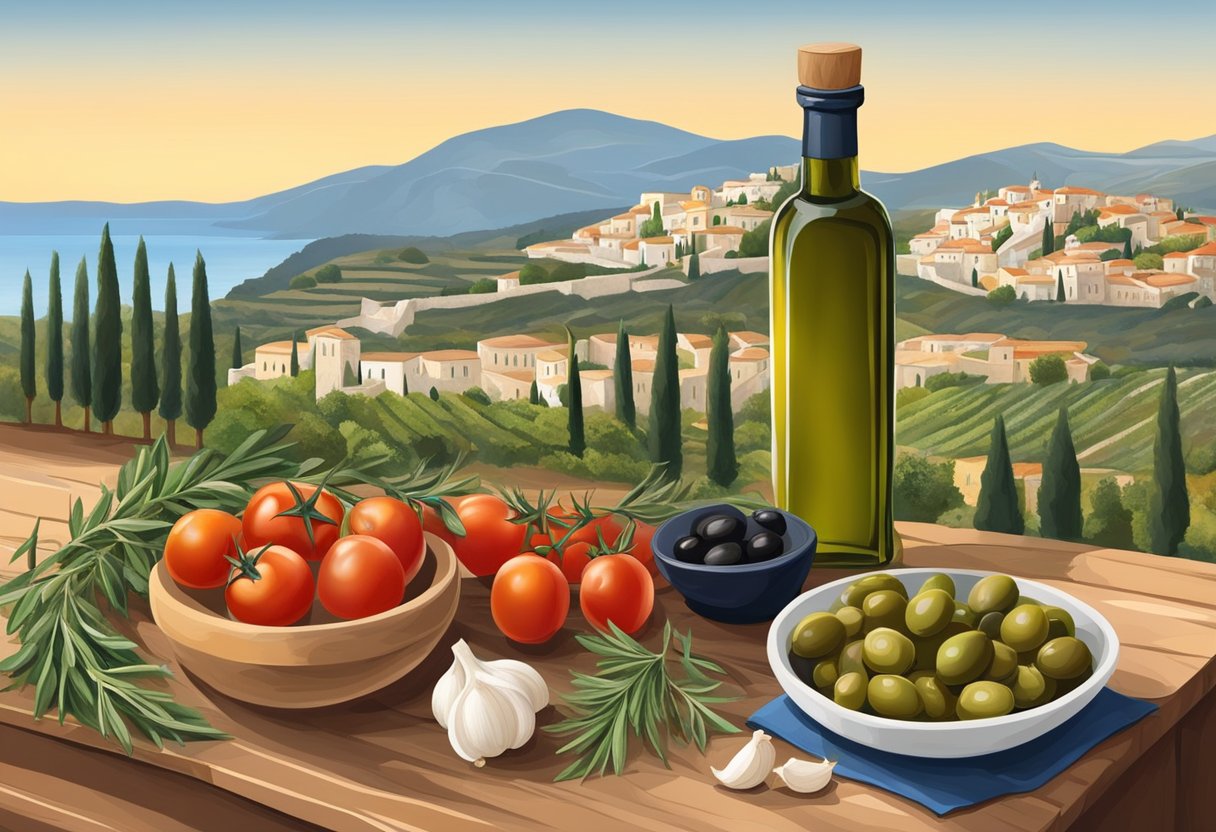
Mediterranean cuisine is celebrated for its nutritional benefits and vibrant flavors. Central to its palate is the use of high-quality, fresh ingredients that define the distinct taste of each regional dish.
Olive Oil: Liquid Gold of the Mediterranean
Olive oil is a staple in the Mediterranean diet, often referred to as “liquid gold” for its central role in cooking and its health benefits. It serves as the key cooking medium, the foundation of vinaigrettes, and a finishing oil for countless dishes. Rich in monounsaturated fats and polyphenols, olive oil contributes to the heart-healthy reputation of Mediterranean food.
Herbs and Spices: A Tapestry of Taste
The Mediterranean’s herbs and spices include basil, oregano, rosemary, and thyme, imparting distinct flavor profiles to regional dishes. Mint is widely used, especially in yogurt-based sauces, which are ideal for those avoiding gluten. Garlic and saffron also play crucial roles in adding depth and warmth to dishes without the need for gluten-containing thickeners.
Cheese and Dairy Products: From Feta to Yogurt
Cheese and dairy products are cornerstones of the Mediterranean diet. Feta cheese, with its crumbly texture and tangy taste, often tops Greek salads or is baked into spanakopita. Yogurt, in particular, serves as a versatile dairy product, appearing in dips, desserts, and as a gluten-free base in sauces. Goat and sheep cheeses are common, offering lactose-sensitive individuals more digestible alternatives.
- Tomatoes are frequently used in Mediterranean cuisine, valued for their juicy acidity which complements the olives and cheeses.
- Fresh fruit, including figs, grapes, and citrus, provide natural sweetness and are prominent in salads and desserts.
- Whole grains, such as quinoa and rice, are integral to many Mediterranean dishes, satisfying the need for gluten-free options.
- Wine adds both complexity to cooking and pleasure to dining, reflecting the region’s longstanding viticulture.
Signature Mediterranean Dishes
Mediterranean cuisine is renowned for its variety of dishes that emphasize fresh ingredients and flavors. Each region has its own specialties that have become signatures of local culinary traditions.
Italy’s Pasta and Pizza
Traditional Italian cuisine offers a vast array of gluten-free options for pasta and pizza lovers. Classic dishes like Spaghetti alla Carbonara and Margherita Pizza have been adapted without compromising on their authentic flavors. Italy’s gluten-free pasta is often made from alternative grains such as rice, corn, or quinoa, providing a satisfying texture and taste that closely mirrors traditional wheat pasta.
Greece’s Moussaka and Greek Salad
Greek culinary traditions offer richly seasoned dishes, with Moussaka as a standout. This layered casserole typically includes eggplant, potato, and spiced meat, all topped with a creamy béchamel sauce—gluten-free adaptations use cornstarch or another thickening agent instead of wheat flour. The Greek Salad, a refreshing mix of tomatoes, cucumbers, onions, feta cheese, and olives, dressed simply with olive oil and herbs, is inherently gluten-free and a staple of Greek cuisine.
North Africa’s Couscous and Kebabs
North African cuisine is famous for its use of spices and grains. Couscous, usually made from wheat, can be substituted with gluten-free grains like millet or brown rice couscous, and is often served with a melody of vegetables and sometimes meat. Kebabs, consisting of skewered and grilled meats heavily spiced and marinated, are a go-to choice for a gluten-free diet as they naturally do not contain any gluten.
Spain’s Paella
Paella, Spain’s iconic dish, traditionally combines rice with a variety of proteins like chicken, rabbit, and seafood, cooked in a single pan. Seasoned with saffron and an array of spices, Paella is naturally gluten-free and a celebration of regional flavors, showcasing the quality of local produce and cooking techniques that highlight Spanish culinary customs.
Cultural and Lifestyle Aspects

The Mediterranean region exhibits a rich tapestry of cultural and lifestyle aspects, deeply interconnected with their culinary traditions, where gluten-free options are seamlessly integrated into the daily diet.
Eating Habits and Meal Structures
Mediterranean eating habits are steeped in tradition and culture, with meals often viewed as a cornerstone of family and social life. Gluten-free diets are well catered to, as many traditional dishes naturally lack gluten. Meals are structured to incorporate a variety of food groups, including an abundance of fruits, vegetables, legumes, nuts, seeds, and gluten-free grains like rice and quinoa. These meals typically follow a pattern of moderate consumption, with smaller, more frequent meals that are savored and consumed with mindfulness and appreciation.
Food Preparation and Cooking Techniques
Cooking techniques in the Mediterranean showcase the value placed on preparation and the preservation of natural flavors. Gluten-free cooking is effortless in this cuisine, given its reliance on olive oil, fresh herbs, and a bounty of naturally gluten-free ingredients. Techniques such as grilling and baking are predominant, enhancing flavors while maintaining nutritional integrity. Recipes passed down through generations reflect the lifestyle of the people, embodying the essence of the Mediterranean ethos which includes ample physical activity and a balanced approach to eating, embodying the mix of tradition and health.
Modern Adaptations and Trends
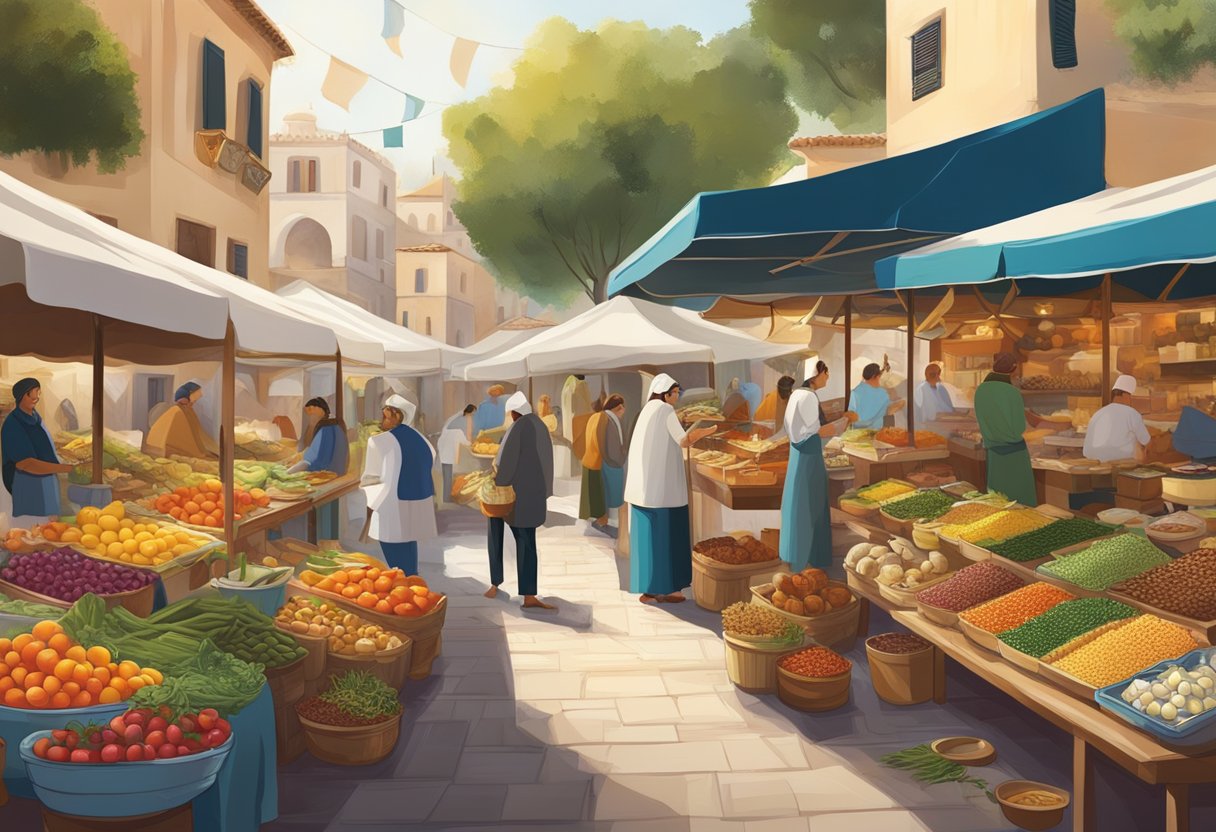
As Mediterranean cuisine continues to evolve, chefs and food enthusiasts are weaving in new ingredients and influences. These changes breathe new life into traditional dishes, while still respecting their cultural roots.
Incorporation of New Ingredients
With a growing interest in gluten-free options, Mediterranean chefs are experimenting with gluten-free grains such as quinoa and amaranth. These ingredients not only cater to dietary restrictions but also add new textures and flavors to classic Mediterranean dishes. For example, tabbouleh, traditionally made with bulgur wheat, is now often created with quinoa, providing a gluten-free alternative that aligns with contemporary health trends.
- Gluten-free Pasta Innovations: Gluten-free pasta, crafted from corn or rice flour, enables the creation of gluten-free versions of pasta-based dishes like spaghetti alle vongole.
- Gluten-free Pita Breads: A mixture of tapioca and rice flour can create a soft, flexible pita to accompany meze platters without the gluten.
Impact of Globalization on Traditional Dishes
Globalization has introduced Mediterranean cuisine to a wider array of flavors and ingredients from around the world, resulting in fusion dishes that reflect a blend of cultures. The assimilation of Asian spices into Mediterranean recipes is one such trend, adding a twist to traditional flavor profiles.
- Mediterranean-Asian Fusion: Dishes like falafel are being reimagined with a kick of wasabi, marrying the Mediterranean staple with Japanese zing.
- Global Influences: The incorporation of avocado, a non-native ingredient, into salads and spreads showcases the impact of other cuisines on the Mediterranean palette.
Each adaptation underscores the dynamic nature of Mediterranean cuisine as it intermingles with global dietary trends and tastes.
The Future of Mediterranean Cuisine
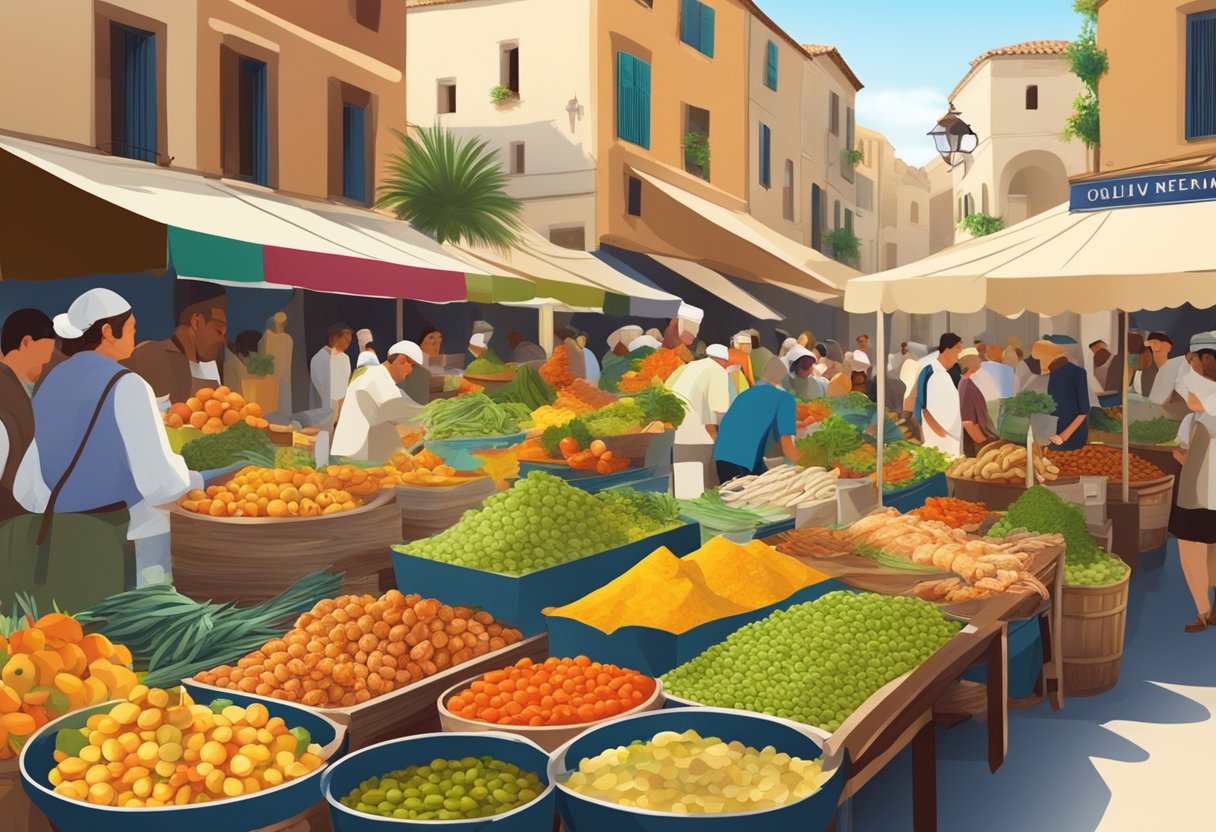
The future of Mediterranean cuisine is intricately tied to its adaptability to sustainable practices and the steadfast preservation of its rich culinary heritage. Innovations are expected to drive the longevity of this beloved cuisine, particularly through a gluten-free lens.
Sustainability and Environmental Considerations
Mediterranean cuisine is embracing sustainability by prioritizing local and seasonal ingredients. Farm-to-table approaches are minimizing carbon footprints and supporting local economies. For example, the traditional use of olive oil, a staple in the Mediterranean diet, is seeing a shift towards organic and sustainably-sourced options to reduce environmental impact and enhance the longevity of olive groves.
Gluten-free options are also gaining traction within this space. Legumes, such as lentils and chickpeas, and ancient grains like quinoa, are becoming central to many dishes, providing environmentally friendly alternatives to wheat that cater to the growing demand for gluten-free diets. The introduction of these ingredients aligns with Mediterranean sustainability goals, as they require less water and yield nutrient-rich harvests.
Preservation of Culinary Heritage
Preserving the Mediterranean culinary heritage hinges on maintaining traditional practices while allowing them to evolve with modern dietary needs. Culinary educators and chefs are leading the charge, ensuring that the essence of these time-honored recipes is retained even when they are adapted to gluten-free versions.
Efforts like registering the Mediterranean diet as an intangible cultural heritage with UNESCO underscore the global recognition of its value and the commitment to its preservation. Embracing gluten-free components into this rich tradition illustrates how innovation can coexist with heritage, allowing for a wider audience to enjoy Mediterranean flavors while respecting dietary restrictions and contributing to the culinary heritage‘s transmission to future generations.
Frequently Asked Questions
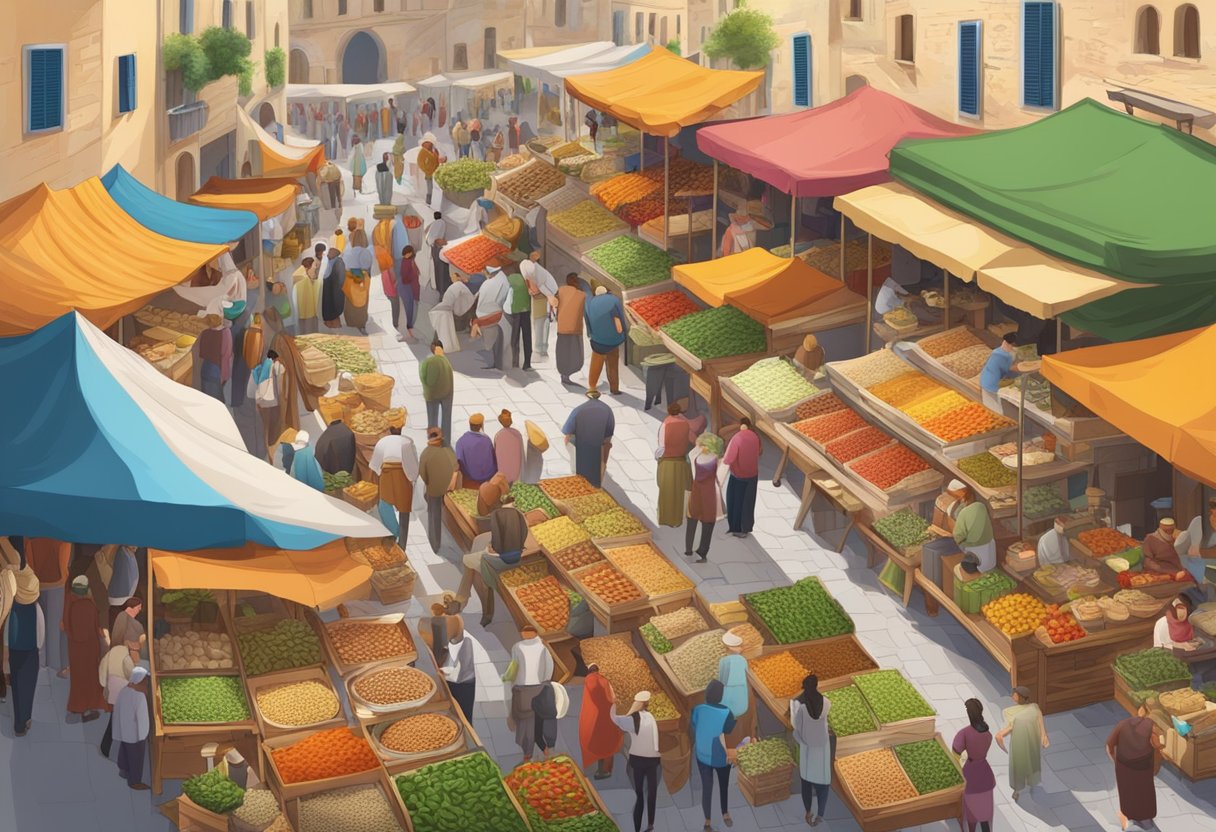
Delving into the culinary depths of the Mediterranean, one uncovers a tapestry of flavors that vary by region due to climate, geography, and history. These disparities result in a dynamic food landscape, reflective of the rich cultural diversity found within the Mediterranean.
What are the primary differences among the various Mediterranean food regions?
Southern Italian cuisine is known for its employment of tomatoes, pasta, and olive oil, while Greek food often features feta cheese, lamb, and yogurts. Each region adapts its menu to locally available ingredients, which, combined with historical influences, creates distinct culinary identities.
How does the Mediterranean diet vary by country within the region?
In Spain, the diet is punctuated by rice dishes like paella, whereas, in coastal North African countries, there’s a more pronounced use of spices such as cumin and coriander. Dietary patterns are influenced by local produce, climate, and traditional cooking methods.
Can you highlight the unique culinary traits of coastal versus inland Mediterranean regions?
Coastal regions tend to lean heavily on seafood. For instance, the fishing villages of the Amalfi Coast showcase dishes centered around fresh catches. In contrast, inland areas like Provence incorporate heartier ingredients such as lavender and truffles.
What are some staple ingredients that define Mediterranean cuisine?
Olive oil is the cornerstone of Mediterranean cooking, alongside ingredients like garlic, a variety of fresh and sun-dried fruits, legumes, whole grains, and nuts, which all play pivotal roles in crafting traditional dishes.
How do historical and cultural factors influence Mediterranean cooking practices?
Historical trade routes introduced a range of spices and culinary techniques to the Mediterranean basin, shaping the region’s cooking practices. For example, the Moorish occupation left a lasting impact on Spanish cuisine with the introduction of almonds, spices, and citrus.
What are the main contrasts between Mediterranean and Middle Eastern cooking styles?
Middle Eastern cuisine often highlights more robust flavors stemming from a diverse array of spices like za’atar and sumac. Mediterranean cooking, while also herb-intensive, tends to have a lighter, more olive oil-based composition with simpler spice profiles.



